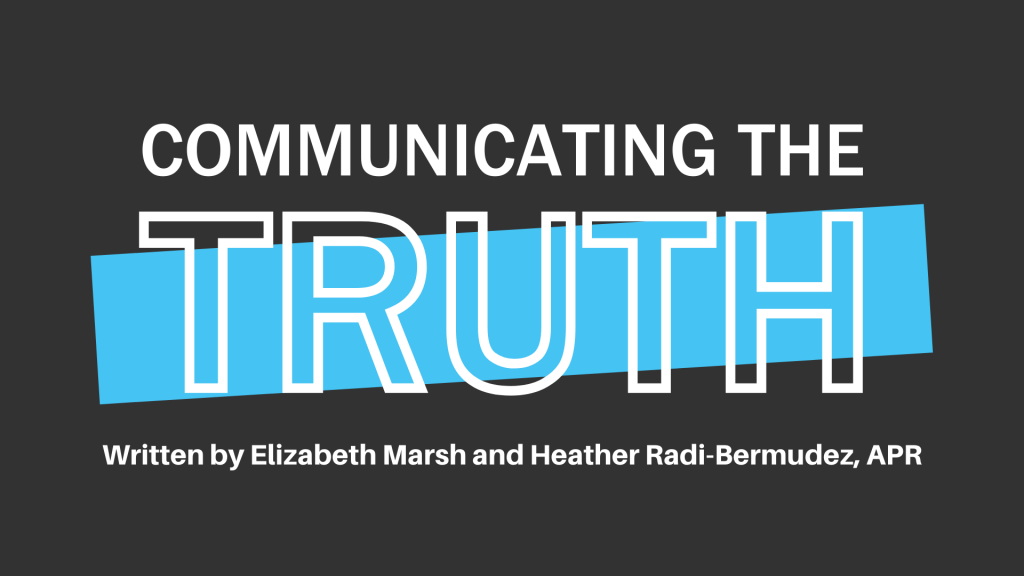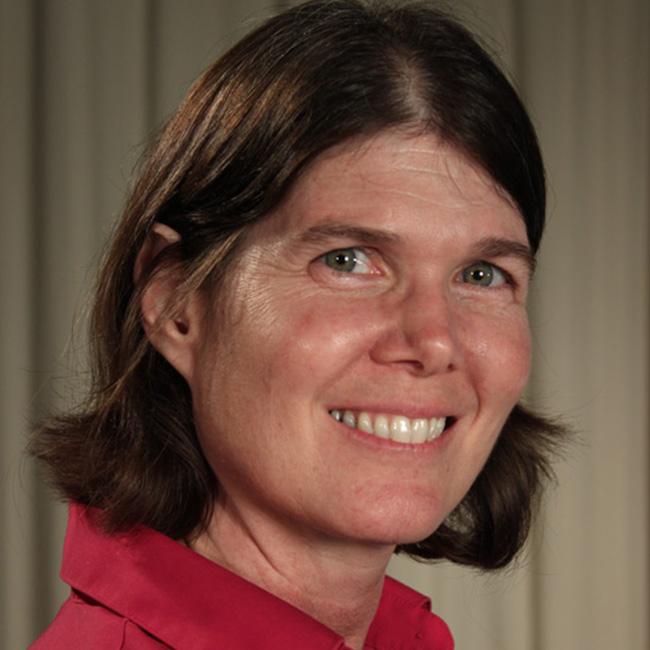Communicating the Truth

Humans have always had the ability to engage in lies, rumors, deception or some other distortion of the truth. And, communicators have historically wrestled with the challenges caused by false or misleading information impacting the clients, organizations and communities that they serve. These are not new concepts. What is new and causing greater concern and challenge is the speed and frequency at which this information is being spiraled around our world.
Misinformation and disinformation is all around us. From false claims of a stolen election to inaccurate information about the danger of the COVID-19 vaccine, it threatens us in very real ways. A 2020 study by the Institute of Public Relations found that more than two-thirds of Americans see disinformation as a real threat to our democracy. As large of a concern as it is for Americans, it’s an even bigger concern for communicators.
While misinformation and disinformation are different — misinformation being a lie that is passed on without understanding it is a lie and without malicious intent and disinformation being a lie that is spread intentionally and maliciously — both are inextricably linked.
Disinformation, although initially spread by actors with malevolent intent, is often picked up and spread by people who think it is true. Misinformation coming from an innocent misunderstanding or misreading can be then picked up by malevolent actors, often a state agency like Russia Today or members of our own Congress. This false information is then repackaged to be more extreme and pushed out to a wider audience, even though they know it is false, to further their own agenda. And, somewhere in between the two, when genuine information is distorted to intentionally harm a person or reputation, you have malinformation.
In most cases, efforts to counter misinformation and disinformation use the same tools, the same processes. This proliferation of doctored narratives has become more obvious and more dangerous with the advent of social media. Social media is something that we as strategic communicators prize because it allows us to leverage authenticity and offer credibility as well as to share key messaging with our target audiences. People believe their friends but not a company, so we use social media to reach influencers who will spread our message as if it were their own. The problem is that mis/disinformation spreads just as quickly and with just as much of the veneer of authenticity as brand messaging. The very aspect of social media we prize: authentic communication from real people, not experts, means we endow those same “real people” with the ability to spread lies.
Further, the ability of social media to spread information — true or false — to an audience who is primed to believe it is essential to the very algorithms that drive social media. These algorithms allow social media platforms to filter and prioritize content based on individual indicators, such as viewing behaviors, content preferences and more. This curated content and information matches what the user has already asked for. There are change makers and ethical technologists working tirelessly to address these issues and help counter this whether it’s through public policy, media literacy or the any number of tactics being used to point us in the right direction. As communicators, our work here is now.
Whether it’s mis/dis/mal information or whatever next evolution of information you have to combat on behalf of your client or organization, communicators must be prepared to respond at a moment’s notice. Think crisis communications. The hallmarks we apply in crisis communications — truth, transparency and timeliness — are the same we should hold true when it comes to this information disorder.
Fortunately, as strategic communicators we are in a better position than most to successfully counter mis/disinformation. We understand how viral information works, and we understand what makes a message successful. We also understand how to react to a crisis, and mis/disinformation really is a crisis.
Research suggests we are most successful at countering mis/disinformation when our counter message is coherent, consistent with the audience’s worldview, and from the same source as the original misinformation. With disinformation it is unlikely that the original source will retract their like because they have a vested interest in not countering their false information. It is possible though to interrupt this spread when it reaches a public that does not have this vested interest.
The first steps in countering mis/dis information are to prevent it from happening in the first place. You need to make sure that you have a track record of truth telling, of authenticity. You need to make sure that when you package information to be disseminated it is both truthful and compelling. Storytelling is one of our most powerful weapons against mis/disinformation.
It is important that all the stakeholders in any conversation are identified, their vulnerabilities, their preferences, their emotional attachments, all the things that can affect how they interpret our message need to be recognized. Listening is the most important step; you cannot counter a message when you do not understand why it is compelling. Then you need to establish liaisons in the very communities where mis/disinformation about your brand, your message, your truth is likely to be spread. You need their respect, which requires that you allow them to speak free about their values and concerns so you understand them, especially in the context of mis/disinformation.
Then when mis/disinformation starts about your brand or message, you already have ambassadors in the communities where it will be spread who can take up your counter-message. People who are credible influencers with the source of misinformation stand a better chance at getting them to retract the message. You have pre-seeded the correct information, which you hope changes the audience’s worldview more to the truth.
As long as there are humans, there will inevitably be falsehoods, conflicts and wrongdoings to be corrected. As communicators, we must remember that we have an unwavering commitment to stay the course, grounded in the principles of truth and ethical behavior that we apply to the strategic work that we do each day. With that in mind, we will be able to combat whatever information comes our way.
Apply the tenets of crisis communication to mis/disinformation – truth, timeliness, and transparency. Or as Professor Marsh’s students are taught: calm, certainty, compassion, concern and control.

Elizabeth Marsh, a social media and digital communications expert, is Associate Chair and Assistant Professor of the Department of Communication and its nationally ranked Global Strategic Communications master’s program of the College of Communication, Architecture + The Arts (CARTA) at Florida International University (FIU).

Heather Radi-Bermudez, APR, is a public relations practitioner with nearly 20 years of professional experience and an Assistant Teaching Professor in the Department of Communication and its Global Strategic Communications master’s program of the College of Communication, Architecture + The Arts (CARTA) at Florida International University (FIU).
